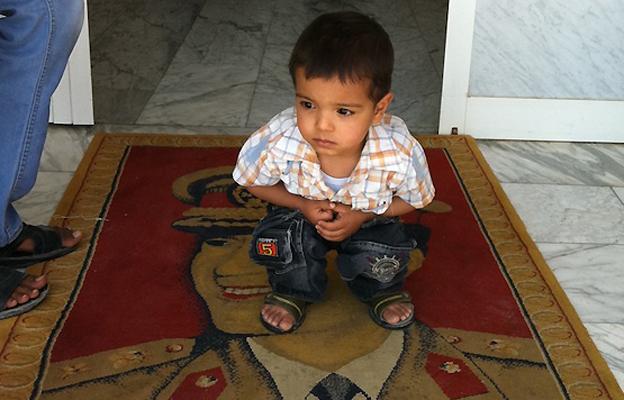Photo journal: Key moments in Libya's six-month revolt
- Published
BBC's Middle East Bureau Editor Paul Danahar reflects on six months of covering the Libyan uprising from both sides of the conflict, using pictures of some of his more memorable moments.
Cartier sunglasses
For a man supposedly worth millions, you would not know it by his boots. When the BBC interviewed Col Gaddafi in March, I was expecting the meeting to take place at a secret desert pavilion. Instead it was a seaside restaurant in central Tripoli. His eyes were hidden behind gold Cartier sunglasses. His flowing brown robes gave off the light scent of sandalwood. "I don't like money," he said. "I have a tent". One look at his black cowboy boots and you would think he was telling the truth. The soles were cracked and pitted, the heels worn. Last week, when I walked around his Bab al-Aziziya compound on the day it fell, I saw where the money had gone. He had a tent like no other tent in the world. But by the end of the day it was just ashes.
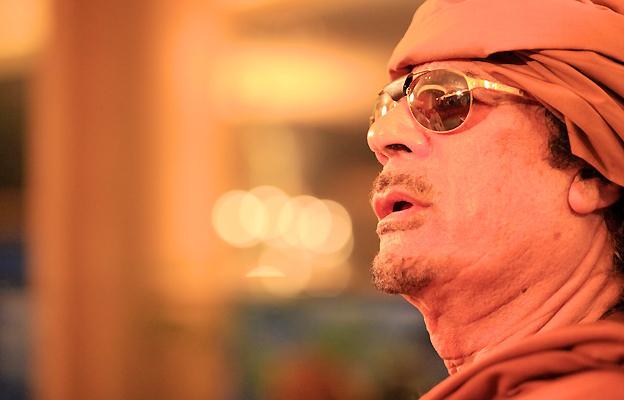
Government heavies
The next image shows the last big demonstration in the Tripoli area of Tajoura before the authorities cracked down with pre-dawn raids and mass arrests. It was just after prayers one Friday in March. I went back the following week when the BBC team broke away from their government minders at the Rixos Hotel. There was no demonstration. The anti-Gaddafi graffiti had been painted over and the local imam told us many young people had been taken away during the night. Soon after we turned up, government heavies arrived in minivans to take us away. This was the last time journalists were able to move easily around the capital before it fell five months later.
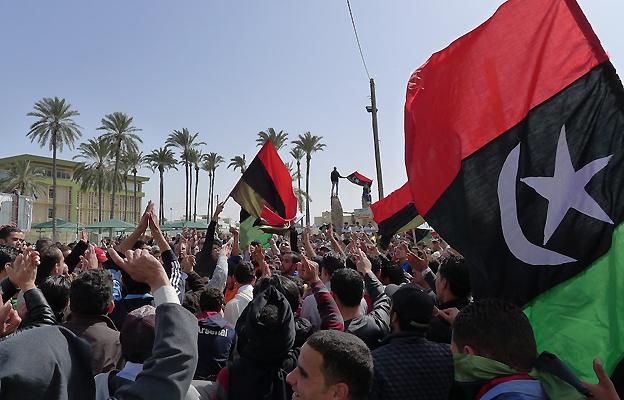
Golf buggy
The next audience with Col Gaddafi was on 2 March, the anniversary of the "establishment of the people's authority". This is when Col Gaddafi says he handed over all power to the people, so he could not technically stand down. The crowd was delighted, the rest of us bemused because he arrived in a brand new golf buggy, its front seat draped with a white sheepskin rug. He talked for three hours. Occasionally he allowed some chants and cheers, and then tapped his microphone, at which the crowd promptly shut up. The last time I saw Col Gaddafi, he was driving his buggy towards a lamp post. But his security team cleared a path and he drove off with two secret service types clinging to the back.
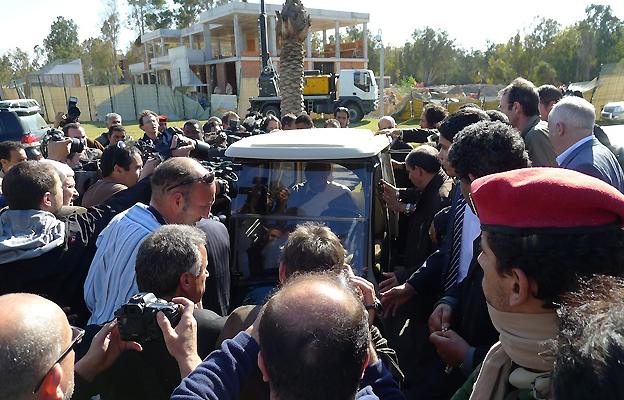
Special bunting
This was one of the government soldiers who had taken back the town of Zawiya, near Tripoli, from the rebels. The fighting was brutal as was the treatment of those arrested by the authorities. Some BBC colleagues were detained for 24 hours and subjected to mock executions. When journalists did get in, it was by media bus under strict supervision of the authorities, but the green-and-white bunting could not hide the scale of the destruction. The makeshift cemetery in the town square, where the rebels had buried their fallen fighters, had been bulldozed. The rebels winning it back proved to be a turning point in the war.
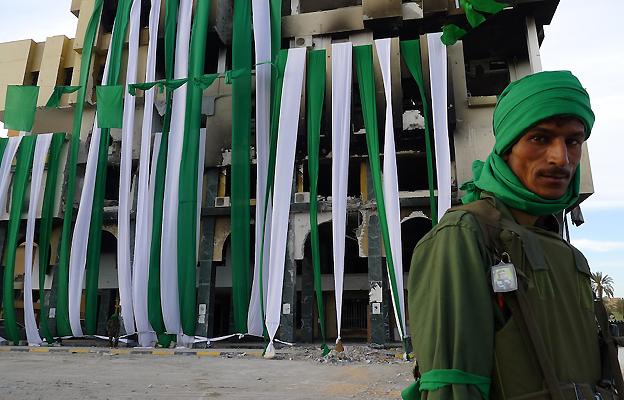
Rebel fatigues
The man below was typical of the rebel fighters on the eastern front outside Ajdabiya in April. They were mostly disorganised and ill-disciplined. He was among those who fled at the first sign of an incoming round. It was at this time that the Libyan government was trying to push the idea that these fighters were linked to al-Qaeda. We tended to see them as more of a danger to themselves than to us. Their evolution into a proper fighting force took many months and some training from foreign military experts. Combined with a steady stream of new weapons and Nato's air campaign, over time they became a force to be reckoned with.
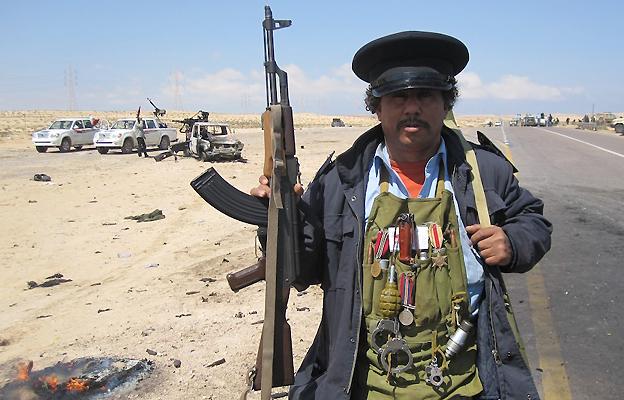
Gaddafi graffiti
Years of being silenced have led to an explosion of graffiti in Libyan towns and cities. Artists played a cat-and-mouse game with the authorities in Tripoli - they sprayed by night and government lackeys whitewashed by day. This wall - in Liberation Square in Misrata - is in no danger of being repainted. Less artistic but more poignant was graffiti by the family of Abdel Salem Fouzy Alshaba, a 23-year-old economics student. The day after I took this picture, I watched him die at a hospital on the city's western front line. He sustained head and back injuries from a grad rocket fired by Gaddafi forces. Within days, his family was using a spray can to rename streets across the city in his honour.
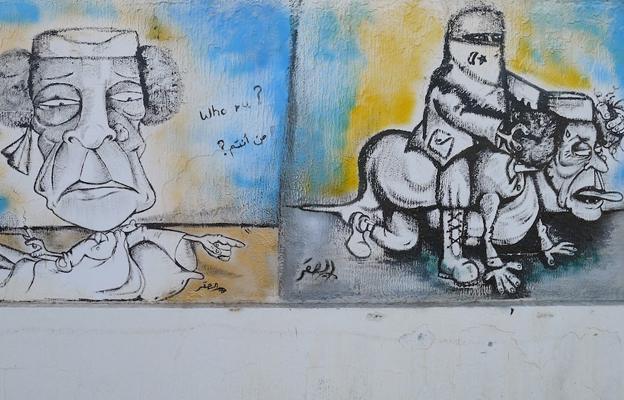
Famous fist
This building in the Bab al-Aziziya compound is where Col Gaddafi made most of his anti-Western speeches. It was bombed in 1986 by US warplanes in revenge for a nightclub bombing in Germany that targeted US servicemen. The fist crushing the US fighter jet symbolised Col Gaddafi's defiance. After the compound fell to rebel forces, young men were queuing to have their photo taken on it. A few days later, someone "liberated" the famous fist from its mount and it has not been seen since.
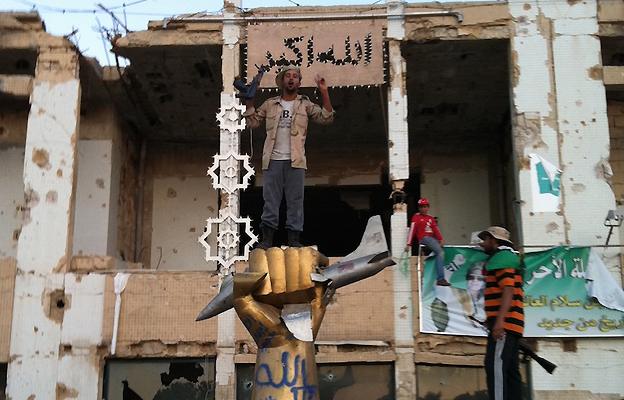
Ransacked compound
They could not get to the man so they were tearing apart everything he owned. This was inside Gaddafi's compound, where I watched rebels walking away with vases, paintings and fridges. What they could not carry, they smashed to pieces. Comparisons have been drawn with the fall of Baghdad, raising fears of what may follow. But Tripoli is a very different story. Only symbols of the regime have been attacked. The rest of the city has remained largely secure.

Squatting boy
This would have got this young boy's family in a lot of trouble a few months ago. But the images people were once forced to mount at their homes and businesses are now used to show their contempt for the regime. This was outside a hospital in Misrata. But everywhere in Tripoli, people are walking over images of the self-styled father of the nation. Libyans have lived with the cult of Gaddafi for more than four decades. No-one knows where he is hiding, but what is clear is that this young Libyan is not going to grow up like his parents - in Col Gaddafi's shadow.
